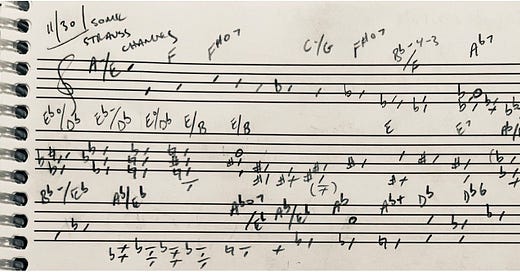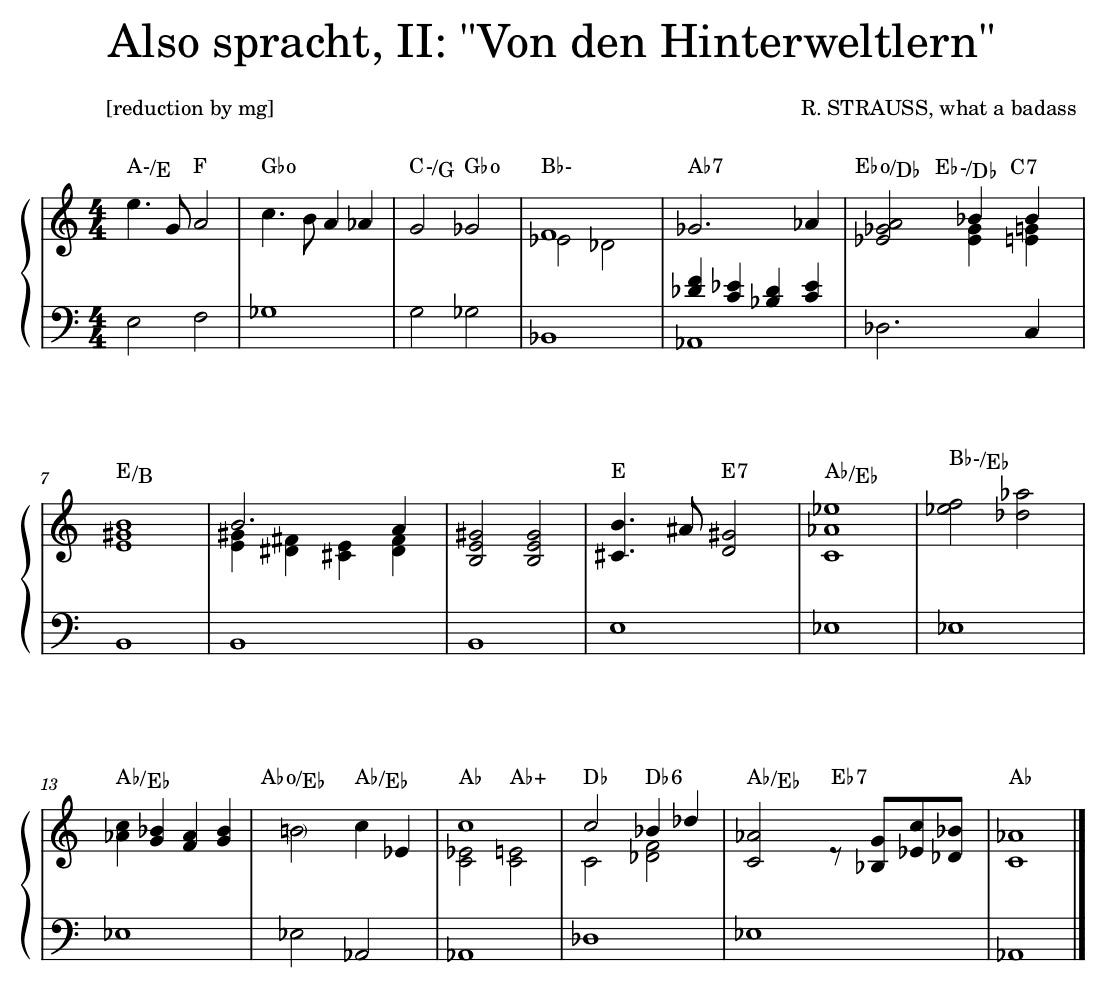Grapefruit Moon // January
a new format, some gigs, and some diminished dreaming in the key of R Strauss
Hi everyone,
Thanks for getting on board over here. I’m excited to start the year with a new and more personal way of letting folks know where in the heck I’m playing music these days; I’ll also be sharing some sounds and ideas from the practice room, that they might instigate some explorations of your own.
The free newsletter, Grapefruit Moon, is simply a monthly update with some calendar listings, new releases, etc. I much prefer hearing about people’s shows and projects via email rather than via social media, and I’m hoping this is a (grape)fruitful way to keep those who are interested in the loop. The musical exploration side of things will be available for $5 — for the price of a cortado, you can dive into some of the musical materials I’m tinkering with and hopefully find something fresh, useful, and/or beautiful in there somewhere.
Upcoming shows:
I’ll be in New York for Winter Jazzfest this weekend:
1/10 @ Le Poisson Rouge (NYC) with Makaya McCraven, Junius Paul, Josh Johnson, and Marquis Hill
1/11 @ Music Hall of Williamsburg (Brooklyn) with Makaya McCraven, Junius Paul, Josh Johnson, Marquis Hill, and Joel Ross
Later this month I’ll be doing some record release shows with Paul Dietrich’s quartet. Paul’s new record, “A Small Patch of Earth,” is out now on Shifting Paradigm Records and came together beautifully; we cut it in a big empty concert hall, no headphones, really a perfect environment and headspace in which to capture Paul’s delicate writing.
Paul Dietrich Elemental Quartet shows:
1/17 @ North Street Cabaret (Madison, WI)
1/22 @ Constellation (Chicago, IL)
1/23 @ Gibson Music Hall (Appleton, WI)
1/25 @ Bar Centro (Milwaukee, WI)
Hope to see you somewhere!
Let’s get into some beautiful sounds below (Note — I’m making this free and available to everyone for this first edition; going forward, this will be the section for paid subscribers):
I’m kicking things off here with a journey into some diminished harmony — what better way to start the new year than with a sound that so distinctly signals change, transition, and the possibility of a new future? I don’t tend to think a single chord can resolve the many intersecting global nightmares we’re living through (what would THAT sound like, though) but I do think we can find some beauty here in the music, if not the metaphor.
When I’m looking for some melodic and harmonic inspiration, sometimes I’ll reach for some orchestral music and find a passage that grabs my curiosity. Adapting - and by default, reducing - these excerpts and themes to the guitar is a great way to train your ears, uncover new chord voicings and harmonic devices, internalize some beautiful melodic ideas…the list goes on. My friend Bryan recently sent me a recording of Richard Strauss’ Also sprach Zarathustra and urged me to check out what happens after the initial theme we’ve all heard a million times. After hearing the second movement I decided to make a small transcription:
Let’s listen to this passage, about one minute of music:
What I’m going for, both in my personal hand-written scribble and the more legible grand staff version below, is a very general approximation of what I’m hearing. I’m interested in the big picture — How is the harmony moving? What is the bass motion? How does the shape of the melody help set up the exciting aspects of the harmony? What inner voice lines might be interesting to try and include, given the limitations of range and available strings/fingers? All of these are just ways of exploring “new-ness,” reaching for things I maybe haven’t tinkered with before, giving myself some fresh problems to try and solve:
Here’s my attempt at getting through it on the guitar, recorded on my phone:
Without going way1 deep into picking this apart, check out how fresh these modulations are. I hear five key centers over these eighteen bars — and all of them brought on by either a diminished sound, or a dominant chord that isn’t the V chord of the new key (I like this move that gets used twice: C7 — essentially an E diminished triad — bringing us to E major; a few bars later, E7 taking us to Ab major).
To get these sounds into your ears and under your fingers, try playing through this passage lots of different ways: just melody and bass, or just blocks of chords, or an improvised line that moves through the harmony and expresses the modulations with fluidity. These ways of exploring help us get to know things “flexibly” rather than specifically — knowing how something works, and what it’s made of, so we can absorb the idea and use it in other contexts.
Lastly, I wanted to share an exercise I’ve been messing around with. This is a nice way to look at some diminished sounds in terms of simple major triads (I am a big advocate for breaking things down to the most fundamental denominator) and also functions as a nice warmup. By alternating between two major triad inversions, moving in a half-step/whole-step pattern (or vice versa), we can touch on a whole palette of harmony and help see the instrument in new ways.
For example, if we take the major triad inversions of “5-1-3” and “3-5-1,” we get this:
I love the contrast of hearing the two alternating inversions, back and forth, while hearing the whole pattern take eight triads to come full circle. A small gesture inside a bigger one2.
Next, try the same thing, but as a single-note arpeggiated idea. Below we see the figure going down the first triad, up the next one, down the next, etc. (Notice how in this example the last note of each downward triad becomes the first note of the one that follows.)
If you’re playing this stuff on a guitar, I think it’s wise to try it both “vertically” and “horizontally” — that is, on a single set of three strings going up and down (or in this case, down and up) the neck, and across string sets while staying in a single position. The latter is probably a little trickier (less “shape-oriented”) for most folks, so definitely recommend getting in there both ways!
Once you have the sound and idea, try it with different inversions, and/or different keys, string groupings, positions, etc. The humble major triad never ceases to amaze.
Thanks for tuning in! I’m looking forward to exploring more music here and letting you know when I’m playing in your town/releasing new sounds. Till then —
M
If anyone wants to get into some harmonic analysis, drop me a line and we can talk about how these sounds are functioning.
There are other internal patterns I’m seeing in here too — how the root movement goes up a minor third, then jumps a tritone, up a minor third, tritone, etc.







